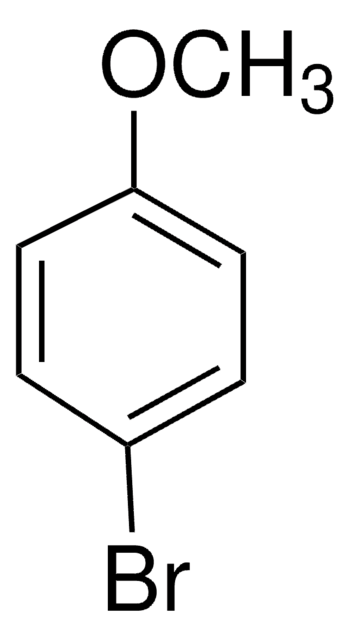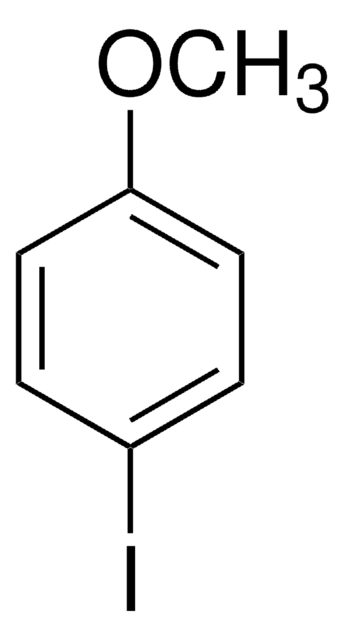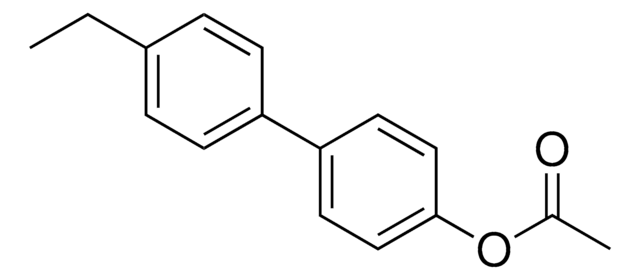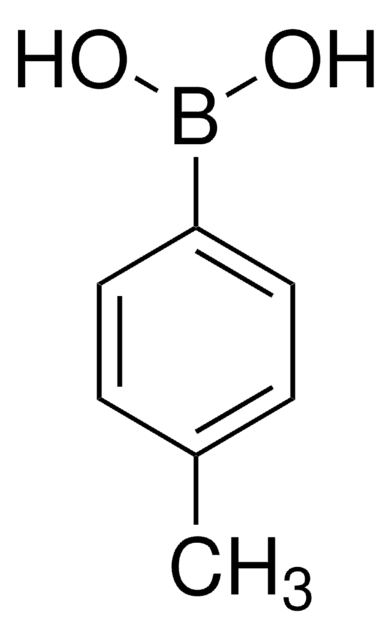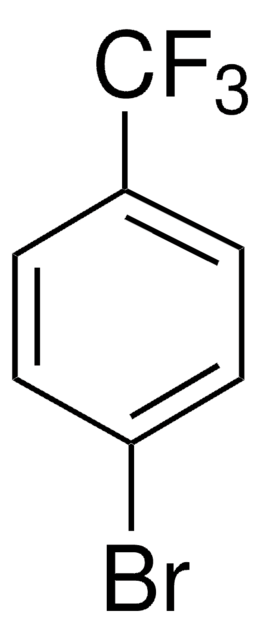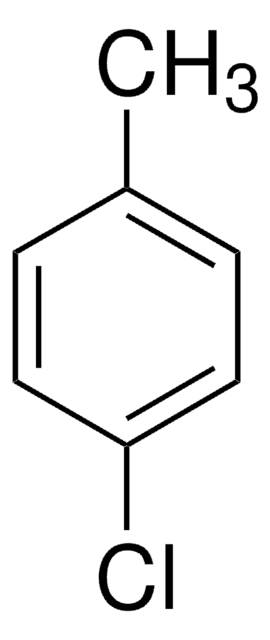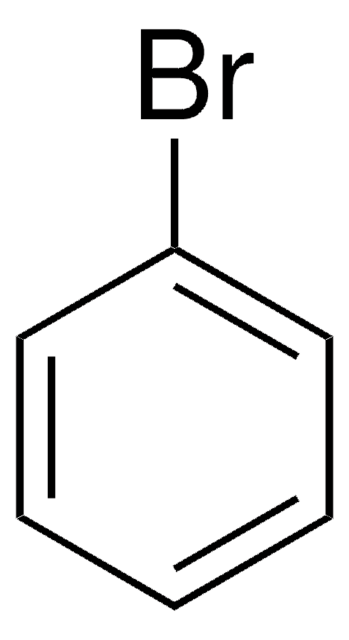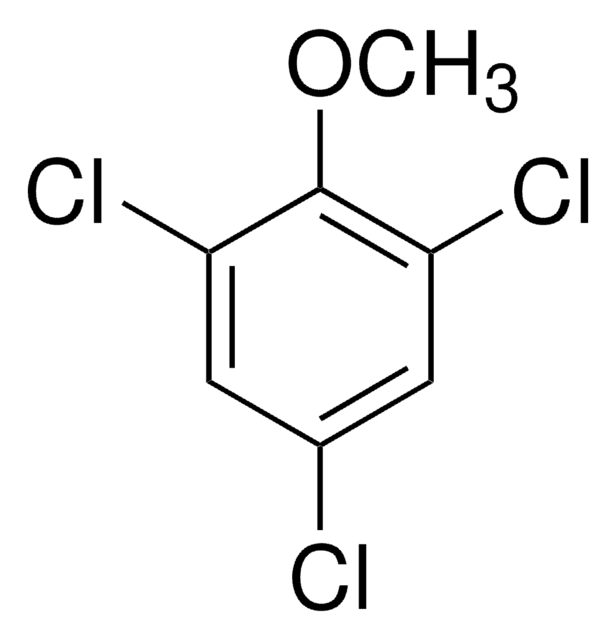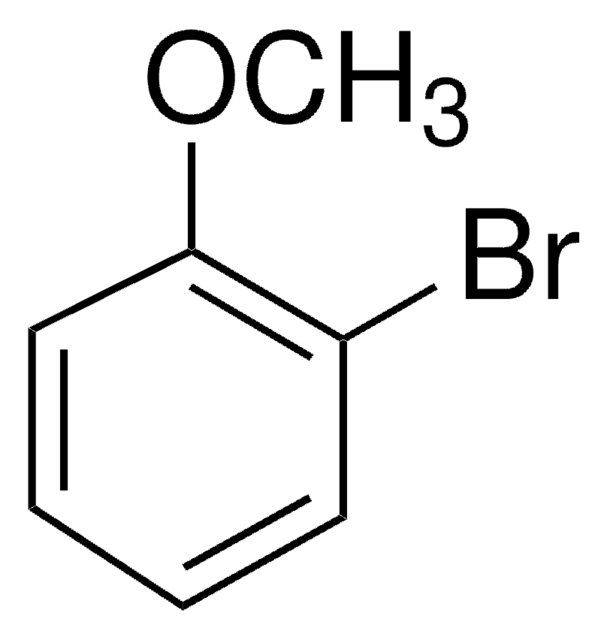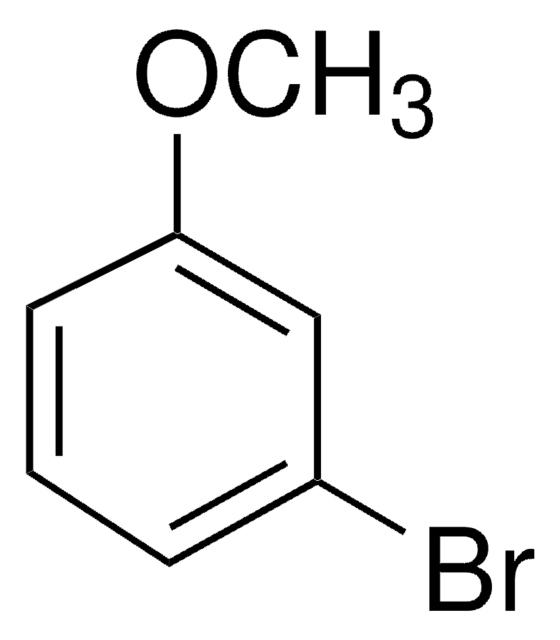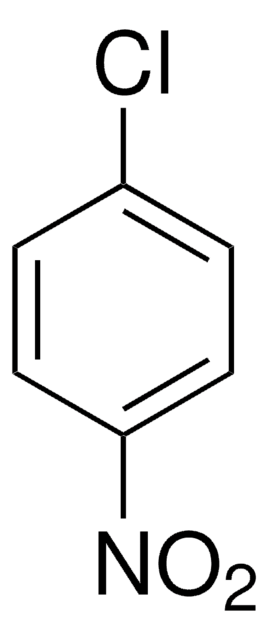Alle Fotos(1)
Wichtige Dokumente
159069
4-Chloranisol
99%
Anmeldenzur Ansicht organisationsspezifischer und vertraglich vereinbarter Preise
Alle Fotos(1)
About This Item
Lineare Formel:
ClC6H4OCH3
CAS-Nummer:
Molekulargewicht:
142.58
Beilstein:
1858901
EG-Nummer:
MDL-Nummer:
UNSPSC-Code:
12352100
PubChem Substanz-ID:
NACRES:
NA.22
Empfohlene Produkte
Qualitätsniveau
Assay
99%
Form
liquid
Brechungsindex
n20/D 1.535 (lit.)
bp
198-202 °C (lit.)
mp (Schmelzpunkt)
−18 °C (lit.)
Dichte
1.164 g/mL at 25 °C (lit.)
Funktionelle Gruppe
chloro
SMILES String
COc1ccc(Cl)cc1
InChI
1S/C7H7ClO/c1-9-7-4-2-6(8)3-5-7/h2-5H,1H3
InChIKey
YRGAYAGBVIXNAQ-UHFFFAOYSA-N
Suchen Sie nach ähnlichen Produkten? Aufrufen Leitfaden zum Produktvergleich
Allgemeine Beschreibung
4-Chloroanisole is an electron-rich chloroarene. It undergoes Ullmann-type homocoupling catalyzed by in situ generated Pd colloids. Reaction of 4-chloroanisole with Cu(II)-smectite in n-hexane, carbon tetrachloride or dichloromethane has been studied. The nucleophilic photosubstitution reactions, photocyanation and photohydrolysis of 4-chloroanisole has been studied by time resolved spectroscopy.
Lagerklassenschlüssel
10 - Combustible liquids
WGK
WGK 3
Flammpunkt (°F)
165.2 °F - closed cup
Flammpunkt (°C)
74 °C - closed cup
Persönliche Schutzausrüstung
Eyeshields, Gloves, type ABEK (EN14387) respirator filter
Hier finden Sie alle aktuellen Versionen:
Besitzen Sie dieses Produkt bereits?
In der Dokumentenbibliothek finden Sie die Dokumentation zu den Produkten, die Sie kürzlich erworben haben.
Kunden haben sich ebenfalls angesehen
Antonio Monopoli et al.
The Journal of organic chemistry, 75(11), 3908-3911 (2010-05-14)
An efficient and highly sustainable Ullmann-type homocoupling of bromo- and chloroarenes, including the more challenging electron-rich chloroarenes (e.g., 4-chloroanisole), catalyzed by in situ generated Pd colloids, is carried out in aqueous medium under relatively mild conditions (temperatures ranging from 40
Laser spectroscopic study of the nucleophilic photosubstitution of 4-chloroanisole and 4-fluoroanisole in aqueous solutions.
Lemmetyinen H, et al.
Journal of Photochemistry, 30(3), 315-338 (1985)
Single electron transfer mechanism of oxidative dechlorination of 4-chloroanisole on copper (II)-smectite.
Govindaraj N, et al.
Environmental Science & Technology, 21(11), 1119-1123 (1987)
Qingqing Mei et al.
Science advances, 4(5), eaaq0266-eaaq0266 (2018-05-26)
Ether bond activation is very interesting because the synthesis of many valuable compounds involves conversion of ethers. Moreover, C-O bond cleavage is also very important for the transformation of biomass, especially lignin, which abundantly contains ether bonds. Developing efficient methods
Unser Team von Wissenschaftlern verfügt über Erfahrung in allen Forschungsbereichen einschließlich Life Science, Materialwissenschaften, chemischer Synthese, Chromatographie, Analytik und vielen mehr..
Setzen Sie sich mit dem technischen Dienst in Verbindung.